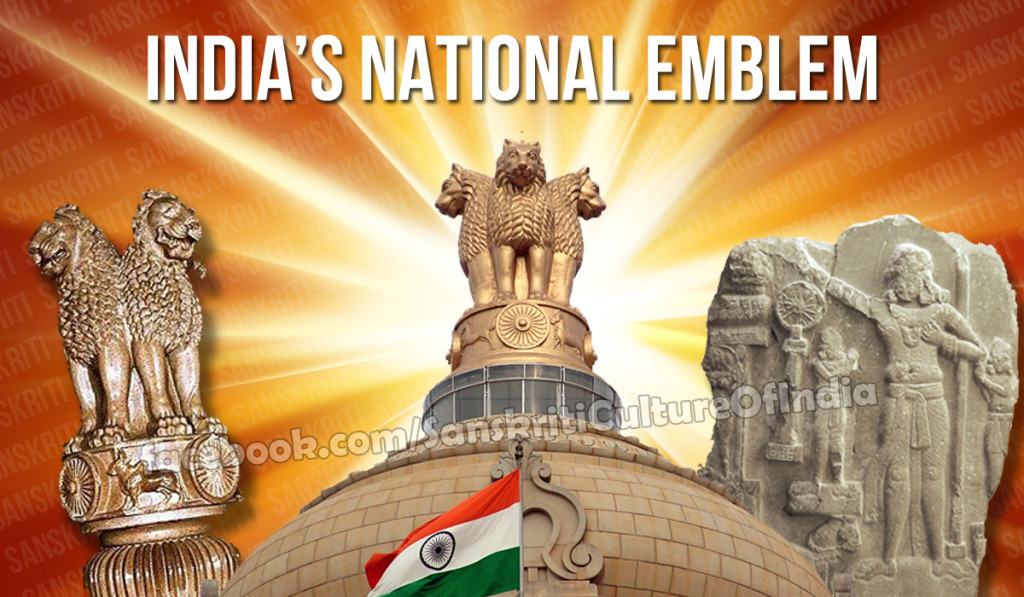The original lion capital has four lions (the fourth is hidden from view) perched on a circular platform engraved with four small animal figures – an elephant, a bull, a horse and a lion. The animals are separated by wheels known as Dharma Chakras or wheels of righteousness. In the adapted emblem, there is only one wheel in the centre. The platform rests on an inverted lotus flower – this does not figure in the national emblem.
So, what does the lion capital symbolize?
The lions are considered to be symbols of power, courage and victory. While the four animals were originally supposed to represent the four stages in the life of the Buddha, a more secular interpretation is that it stands for the four directions. The Dharma chakra, which epitomizes the triumph of righteousness, has twenty-four spokes representing the hours in a day.
The Indian national emblem has the words “satyameva jayate” inscribed in Devanagari script beneath the lion capital. This phrase from the Mundaka Upanishad literally means “truth alone triumphs”. Thus the emblem is a depiction of the eternal and universal power of righteousness and truth.











